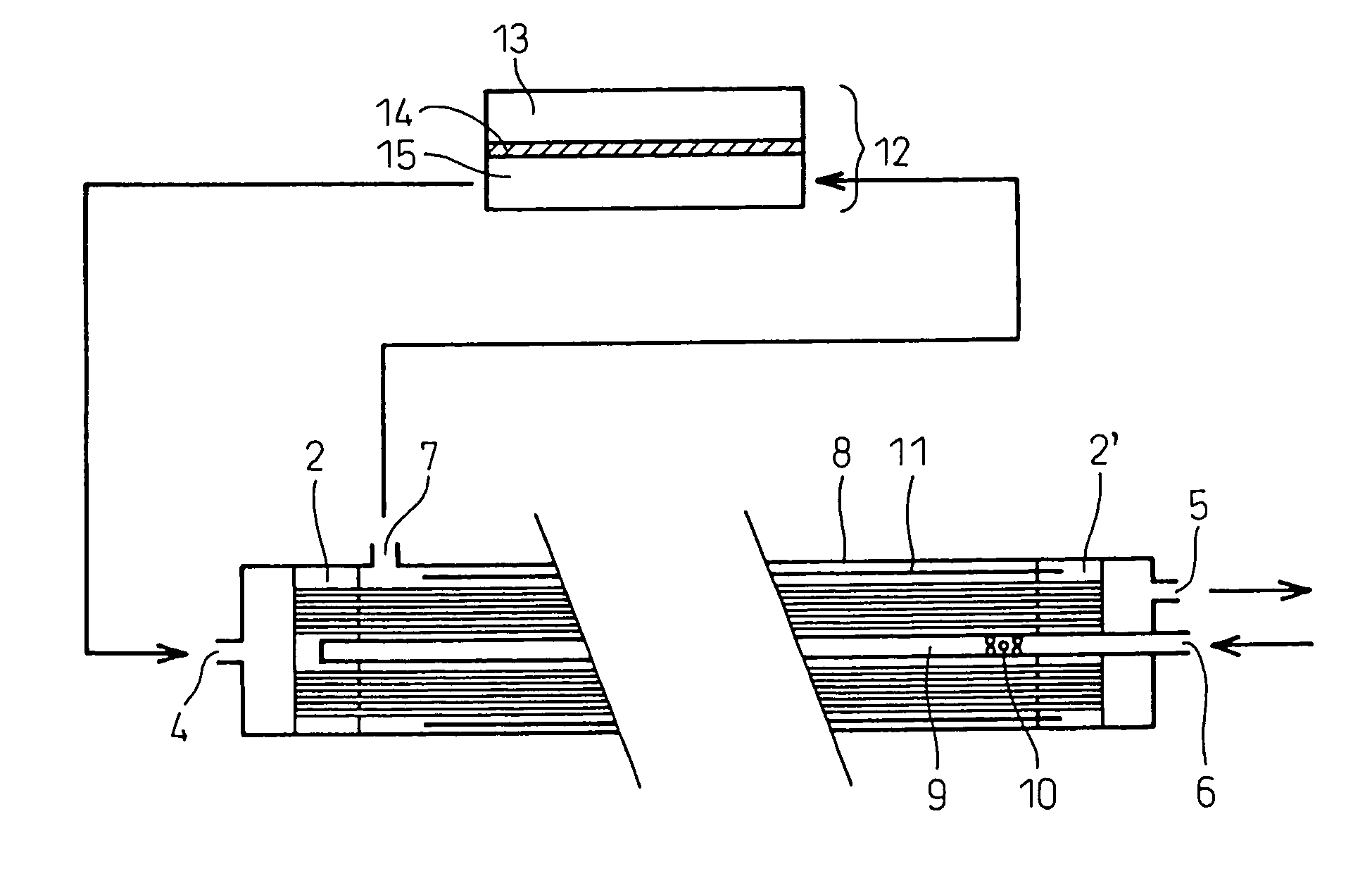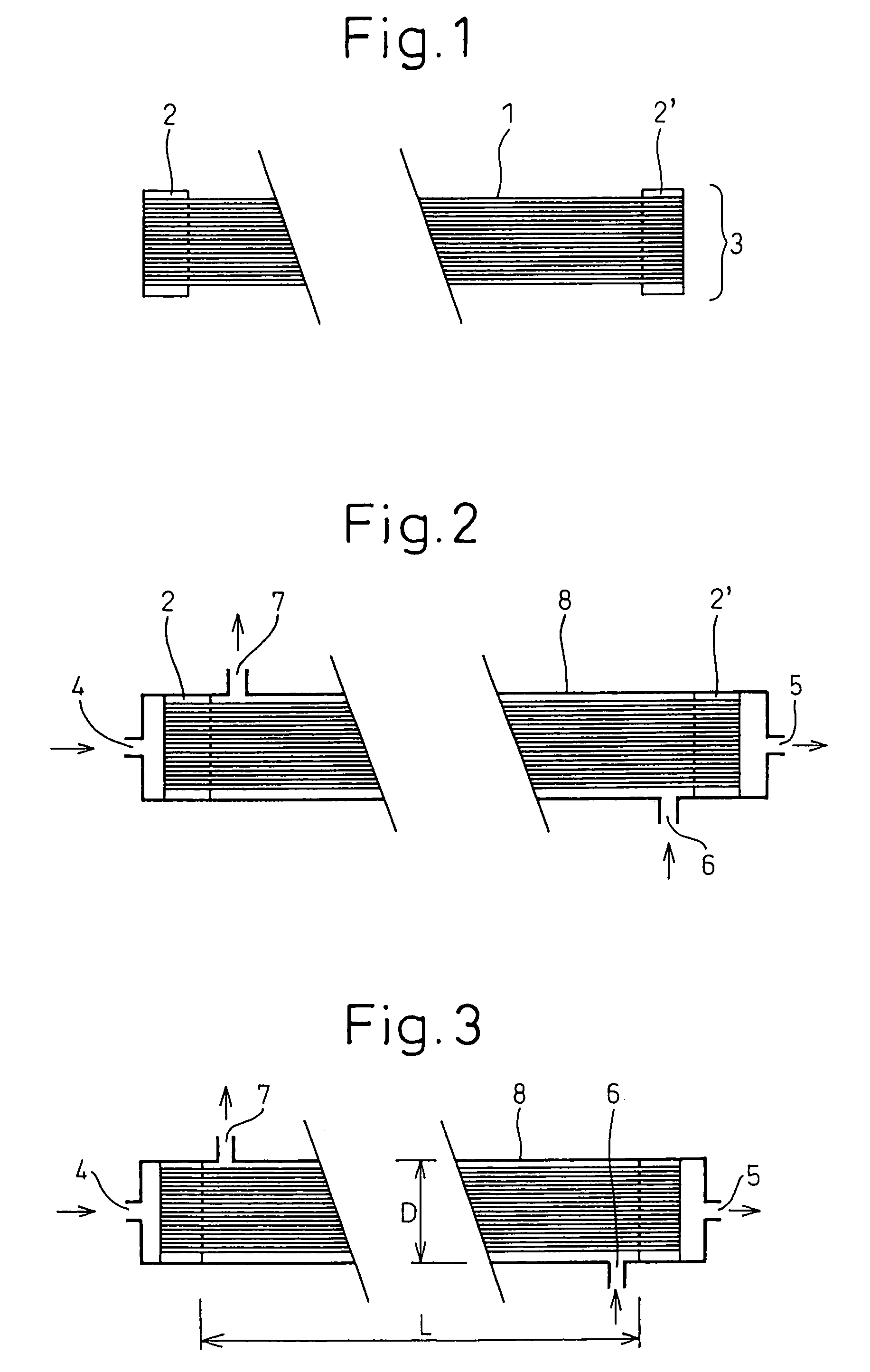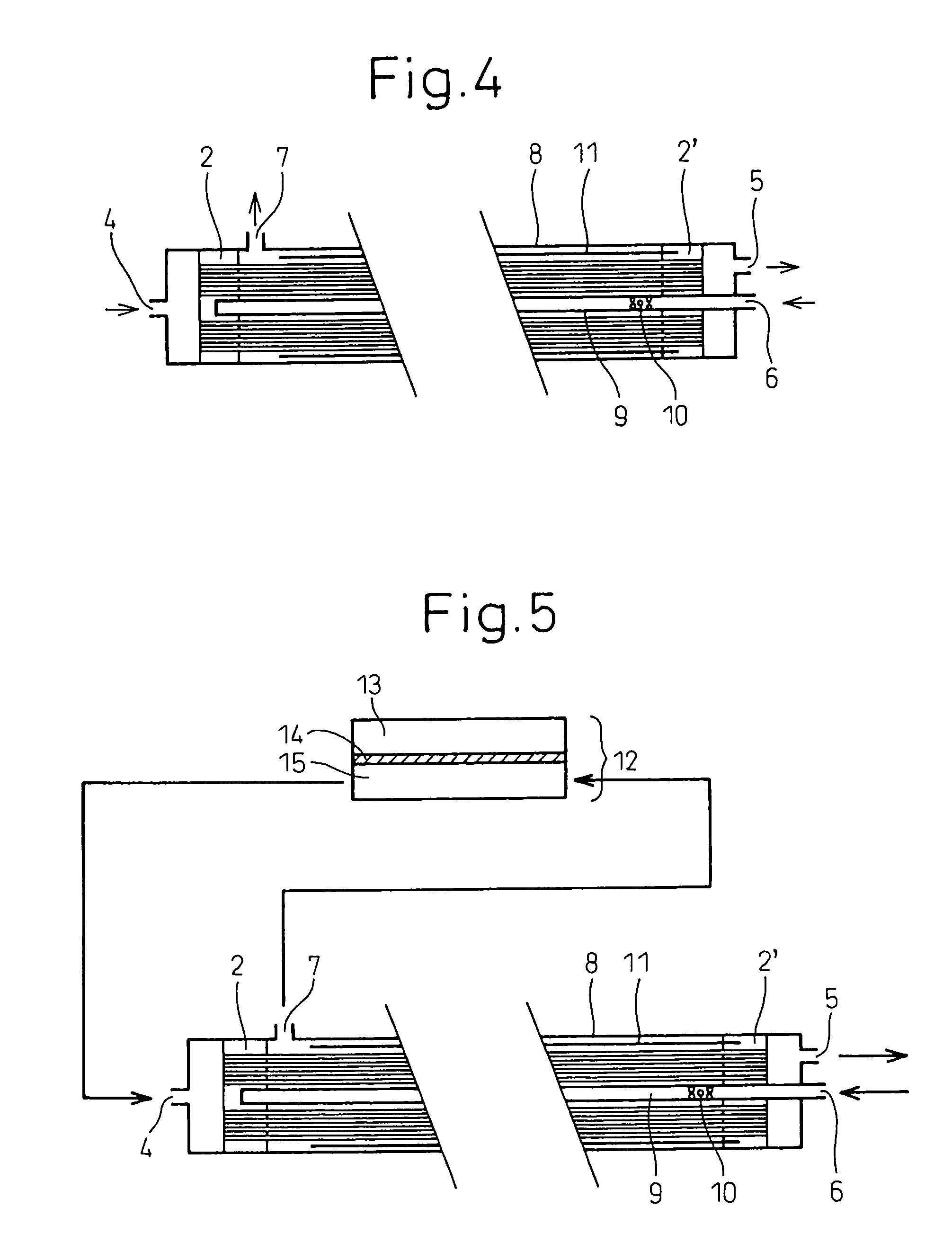Fuel cell-use humidifier
a fuel cell and humidifier technology, applied in lighting and heating apparatus, heating types, separation processes, etc., can solve the problems of increased pressure loss, limited use of hollow fiber water-permeable membrane humidifiers, and abrupt decrease in outpu
- Summary
- Abstract
- Description
- Claims
- Application Information
AI Technical Summary
Benefits of technology
Problems solved by technology
Method used
Image
Examples
example 1
[0097]A hollow fiber membrane element using Polyimide Hollow Fiber Membrane A (inner diameter of hollow fiber membrane: 710 μm), where the effective length (L) of the hollow fiber membrane bundle was 360 mm (the length of each tubesheet was 50 mm, hereinafter the same), the membrane filling percentage was 40%, about 80% of the outer peripheral area of the hollow fiber membrane bundle was covered with a polyimide film along the outer circumference, and the inner diameter of the covering cylindrical film was 150 mm (D), was loaded into a cylindrical container having an inner diameter of 165 mm to produce a humidifying apparatus shown in FIG. 4 (L / D=2.4).
[0098]Air at almost atmospheric pressure, a temperature of 80° C. and a relative humidity of 95% was supplied as the first gas to the hollow side of the hollow fiber membrane 20 at a flow rate of 500 N liter / min, and air at almost atmospheric pressure, a temperature of 25° C. and a relative humidity of 10% was supplied as the second ga...
example 2
[0103]A hollow fiber membrane element using Polyimide Hollow Fiber Membrane A (inner diameter of hollow fiber membrane: 710 μm), where the effective length (L) of the hollow fiber membrane bundle was 600 mm and the membrane filling percentage was 40%, was loaded into a cylindrical container having an inner diameter of 200 mm (D) to produce a humidifying apparatus shown in FIG. 2 (L / D=3.0).
[0104]Air at almost atmospheric pressure, a temperature of 80° C. and a relative humidity of 95% was supplied as the first gas to the hollow side of the hollow fiber membrane at a flow rate of 1,500 N liter / min, and air at almost atmospheric pressure, a temperature of 25° C. and a relative humidity of 10% was supplied as the second gas to the space on the outer side of the hollow fiber membranes at a flow rate of 1,500 N liter / min. These first and second gases were supplied to countercurrently flow.
[0105]The pressure and dew point of each gas were measured. As a result, the pressure loss when the f...
example 3
[0109]A hollow fiber membrane element using Polyimide Hollow Fiber Membrane C (inner diameter of hollow fiber membrane: 570 μm), where the effective length (L) of the hollow fiber membrane bundle was 320 mm and the membrane filling percentage was 40%, was loaded into a cylindrical container having an inner diameter of 100 mm (D) to produce a humidifying apparatus shown in FIG. 2 (L / D=3.2).
[0110]Air at a pressure of 0.2 MPaG, a temperature of 80° C. and a relative humidity of 95% was supplied as the first gas to the hollow side of the hollow fiber membrane at a flow rate of 500 N liter / min, and air at a pressure of 0.2 MPaG, a temperature of 25° C. and a relative humidity of 5% was supplied as the second gas to the space on the outer side of the hollow fiber membrane at a flow rate of 500 N liter / min. These first and second gases were supplied to flow countercurrently.
[0111]The pressure and dew point of each gas were measured. As a result, the pressure loss when the first gas was flo...
PUM
| Property | Measurement | Unit |
|---|---|---|
| pressure | aaaaa | aaaaa |
| inner diameter | aaaaa | aaaaa |
| inner diameter | aaaaa | aaaaa |
Abstract
Description
Claims
Application Information
 Login to View More
Login to View More - R&D
- Intellectual Property
- Life Sciences
- Materials
- Tech Scout
- Unparalleled Data Quality
- Higher Quality Content
- 60% Fewer Hallucinations
Browse by: Latest US Patents, China's latest patents, Technical Efficacy Thesaurus, Application Domain, Technology Topic, Popular Technical Reports.
© 2025 PatSnap. All rights reserved.Legal|Privacy policy|Modern Slavery Act Transparency Statement|Sitemap|About US| Contact US: help@patsnap.com



